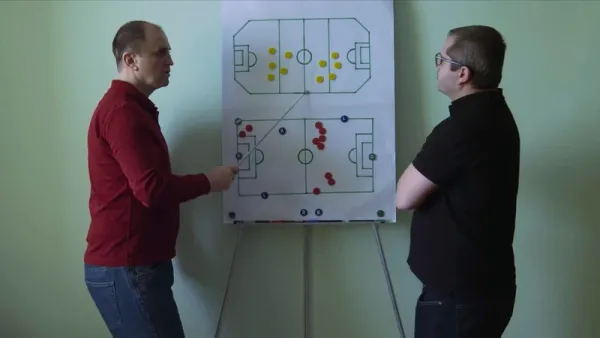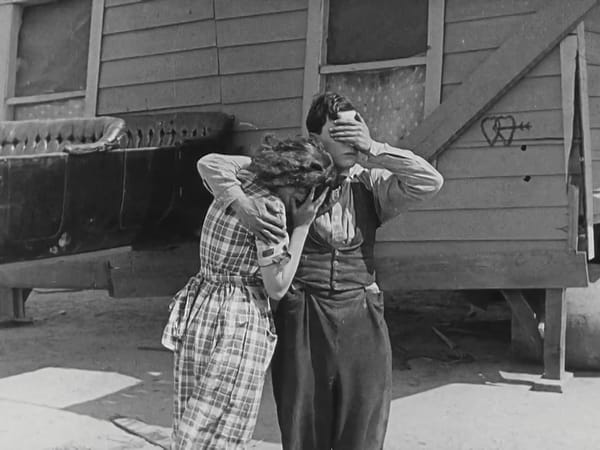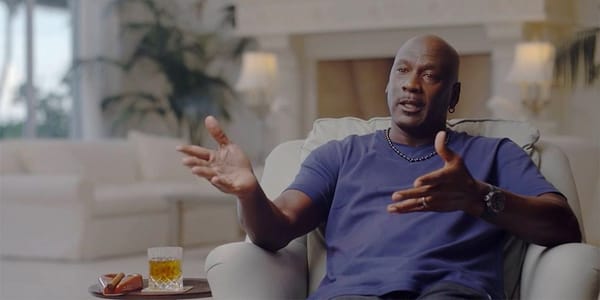Brave Acting at Il Cinema Ritrovato
Manuela reports on some striking performances seen in Bologna.


As Hard Truths takes a short holiday, this piece by Manuela complements our episode on Il Cinema Ritrovato.
I saw my favourite film of the 2025 edition of Il Cinema Ritrovato on the third full day of the festival. The gathering, which just celebrated its 39th edition, brings together film archivists, researchers, filmmakers, and cinephiles alike for a week in Bologna, Italy, to screen newly restored films as well as vintage prints of classic or rediscovered movies. Its movie star strand, this year focused on Katharine Hepburn, was curated by legendary American film critic Molly Haskell, who in her notes described Hepburn’s turn in David Lean’s Summertime as “[perhaps] one of her bravest and most moving performances.” As I talked about the 1955 film with friends later, this idea kept returning like a repeated refrain: Hepburn, in her late forties at the time of filming, showed such vulnerability in the film that it inspired a particular kind of reverence, a “couldn’t be me” type of respect that surprised me. Not that I wasn’t impressed with her work, which is indeed so delicate and revealing; rather, I had not expected it to seem so dangerous, and almost intimidating, to so many viewers.
Hepburn plays Jane Hudson, an unmarried American woman from Akron, Ohio, who in the film is visiting Venice, Italy, on her own and for the first time. As her train approaches the city, she excitedly brandishes her Super 16 camera, filming the breathtaking view captured by Lean and cinematographer Jack Hildyard on glorious Eastmancolor film (I was lucky to see a pristine, glowing vintage print at the festival). A woman with a movie camera, this Katharine Hepburn nevertheless wears skirts instead of her iconic, brazenly un-ladylike trousers. Jane is independent and exuberant, yet even she can’t help but feel out of place alone in the most romantic city in Europe. I was surprised to learn that the film is based on a play, given how much attention Lean pays to the silent, most subtle shifts in Jane’s face and mood as she walks around La Serenissima, noticing beautiful gargoyles before amorous couples holding hands come to distract her from the view. From awe to embarrassment, then back to gratitude at the sight of the city’s ageless beauty, Jane grows increasingly unsettled by a fun holiday that is rapidly turning into an emotional rollercoaster. The instability of her mood felt to me grounded in past yet palpable experience: here is a woman who has learned to make the most of her freedom, following her own feet from one breathtaking vista after another rather than the whims of a lover or a father. But Venice, with its gondolas and romantic sunsets, reminds her again and again of not only love, but also the pain that often accompanies it.
Jane would be a terrifying character for any woman to play in 1955, but perhaps especially for someone like Hepburn, whose entire persona is defined by androgynous strength, wit, and independence – Haskell’s retrospective was titled, “Katharine Hepburn: Feminist, Acrobat and Lover”. Yet I don’t find Jane herself to be so alarming, especially under Lean’s empathetic eye. Her extreme anxiety around love and desire doesn’t come across as embarrassing or ridiculous to me (though perhaps this is revealing more about myself than about the film). Rather, I understand her overcaution and hesitation as evidence of her sincerity and good heart – especially once she meets the prototypical Latin lover Renato (Rossano Brazzi). Her panicked and awkward reaction when she first feels his eyes on her on Piazza San Marco is helplessly authentic: the more she tries to act cool, the clumsier she gets, to great comedic and endearing effect. Jane’s candour feels brave precisely because it exposes her to ridicule. Hepburn’s interpretation is admirable because she puts the power she’s always had at the service of extreme vulnerability, rather than the rebellious intelligence she is known for. Jane is the mirror image of the strong, independent, witty women Hepburn had built her career on – and she’s just as admirable.

It was a different performance I found shockingly vulnerable at the festival. I’d already seen Bob Rafelson’s 1970 masterpiece Five Easy Pieces, but not in its new 4K restoration nor on the gigantic, open-air screen on Piazza Maggiore. Jack Nicholson plays Bobby, a man on the run from his past and from himself, but returning home to see his dying father. Their one-on-one encounter only takes place late into the film. First, Bobby has various dalliances with women, including his brother’s new partner, who doesn’t only succumb to his undeniable charm but also, and to his great chagrin, reflects his faults and denial back to himself. The soul-searching Bobby undergoes is against his will, but by the time he finally comes to be alone with his father, who is too ill to even speak, the drifter’s defences have all been stripped away from him. In that moment, Bobby and Nicholson alike seem so emotionally naked that the desire to keep watching this one-in-a-million performance is just as intense as the impulse to turn away from the screen – like from a stranger crying in public. Nicholson is an idiosyncratic performer with a particular, mildly ironic presence, but he isn’t mannered: his joker act (pun intended) seems borne off his actual personality and therefore comes across as authentic. In that scene, his wit and playfulness are completely washed away by his tears and all that is left is the scared, remorseful man usually hidden away behind the sarcasm and bravado.
Nicholson belongs to a generation of American actors and filmmakers that favoured naturalism, yet I found a similar rejection of obvious artifice in Evgenij Červjakov’s rediscovered 1928 film Moj Syn (My Son). As Peter Bagrov from the George Eastman Museum writes in his programme notes, the filmmaker “wanted his actors to convey their emotional state solely through their eyes, without the aid of mime or gesture.” In the film’s striking opening scene, actress Anna Sten first starts to walk out of a room, but then stops in the door frame and leans against it. In this odd, in-between place, she remains silent for a while, the man behind her wondering with us what is about to happen. Červjakov frames Sten in a tight, still close-up as she looks down at her feet, then lifts her head up slowly. The heartbreaking mix of regret and defeat in her eyes announces what she is hesitating to say, and what will set the plot in motion: “He is not your son.” The rest of the film continues in this mode, focusing on the faces of the actors as if to carefully extract the emotions simmering under their surfaces. Neither purely realistic, nor completely un-expressionistic in their intensity, the performances captured by Červjakov instead feel hyper-realistic – truth at a very high concentration rate.

Modern, naturalistic acting meets overt expressionism in Bodil Ipsen’s Mordets Melodi (Melody of Murder), a 1944 Danish film noir featuring serial murders, a nightclub singer, and hypnosis, among other explosive plot details. A manipulative villain is compulsory; in this case, however, it isn’t the femme fatale but her ex-husband, an impresario played by Angelo Bruun. With his snake eyes and cool demeanour, Bruun recalls the great John Malkovich, grabbing our attention by keeping very quiet and still. His expression is eerily fixed, his sardonic smile inscrutable: we know he can’t be good news, but his intentions remain obscure for most of the film’s runtime. Only in the final act does this vague seediness condense into pure evil: Bruun transforms, not quite literally, into a shape-shifting monster, lifting the film into a more surreal dimension. This shift reminded me of Nicholson’s bigger-than-life performance in Tim Burton’s Batman (1989), or Willem Dafoe’s turns in several films ranging from Sam Raimi’s Spider-Man (2002) to Robert Eggers’ The Lighthouse (2019) — actors who went big but remained credible. The hair-raising scream Bruun lets out near the end of Mordets Melodi is shocking for being unexpected, and for what it finally discloses about the character he so vividly brings to life on the screen.

It isn’t so much that there is room for extremes in acting: rather, good acting requires extremes, for it demands an actor’s total commitment to their character – whether that looks like a 48-year-old Katharine Hepburn anxiously running away from a love interest, Jack Nicholson weeping uncontrollably, Anna Sten saying the most with the least, or Angelo Bruun exploding into a sudden shriek. Good acting is always brave acting, the kind that risks ridicule in order to always reveal more about a character and their truth. What gets called brave acting, on the other hand, depends on many factors: in Hepburn’s case, for instance, on the misogyny that characterised her industry and continues to shape women’s lives. Nicholson’s turn in Five Easy Pieces, by contrast, made him a star overnight, yet I wish it were better appreciated not only for its naturalism and the emergence of a new personality on screen, but also for its rawness, of a kind men usually aren’t authorised or willing to display. Anna Sten’s minimalistic yet heavy performance, as well as that of her co-stars, was met with the incomprehension of Červjakov’s peers, while Bruun’s uncanny instability still feels radical to this day. As it has done in the past and will hopefully continue to do for many years to come, Il Cinema Ritrovato this year unveiled and celebrated the wealth of inspiration to be found in cinema history – inspiration to flirt with ridicule so as to tell the truth. With any luck, such daredevils might one day be described as “brave”.
Support all things Animus by becoming a True Cinephile member – for just £3.50/month or £35/year.




